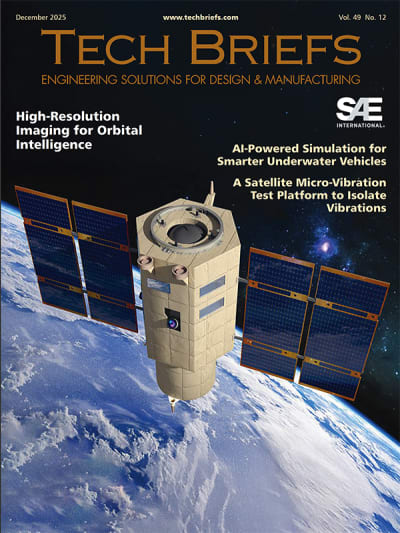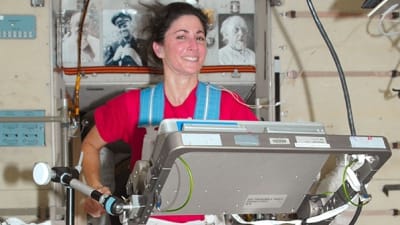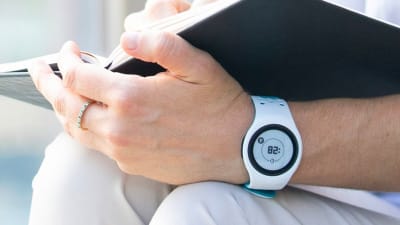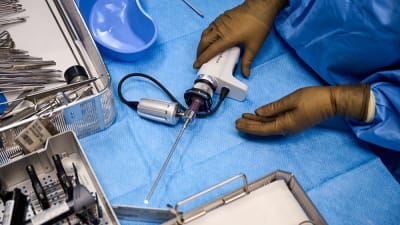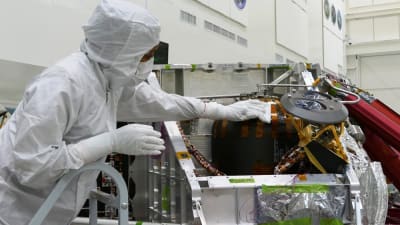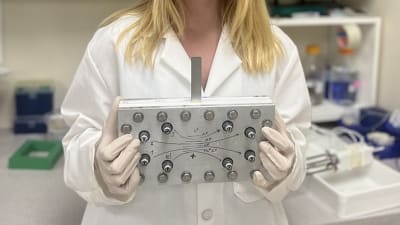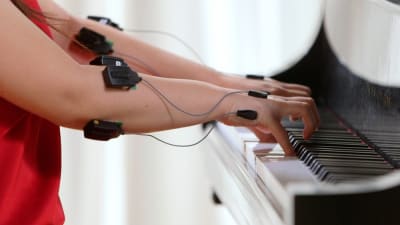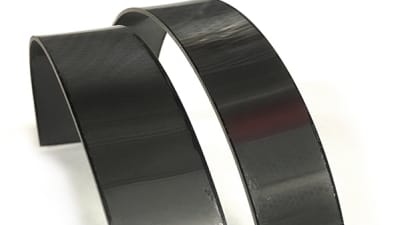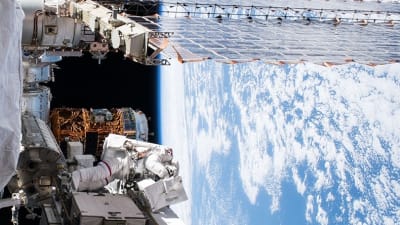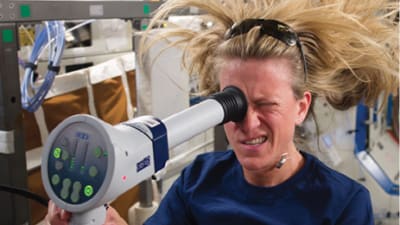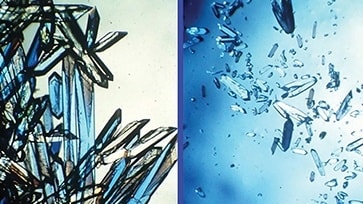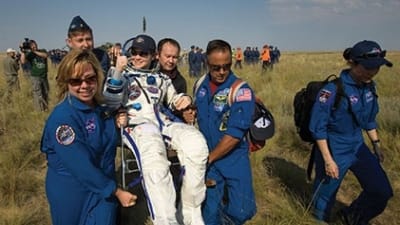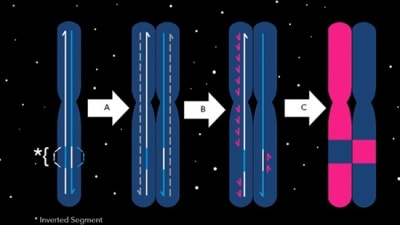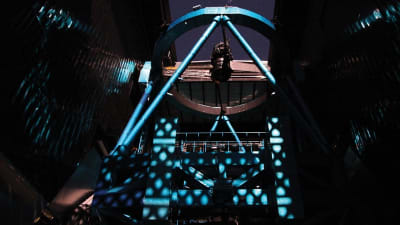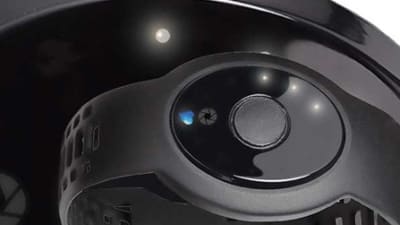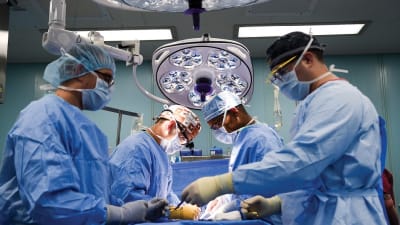NASA Spinoff
Health and Medicine
Spinoff: Health and Medicine
NASA Sets Standard for Nutritional Health Products
Houston-based Nugevity is a restructured version of the company AmeriSciences, which worked with Johnson Space Center to develop dietary supplements for astronauts and then...
Spinoff: Health and Medicine
Space Tech Gives Treadmill Users a ‘Boost’
Boost Treadmills of Palo Alto, California, is the second company cofounded by the son of a former Ames Research Center employee to capitalize on a concept his father developed for...
Spinoff: Health and Medicine
Space-Based Tech for Home Health Monitoring
Radio-frequency technology developed by the Jet Propulsion Laboratory and licensed by Advanced TeleSensors of Austin, Texas, makes it possible to monitor vital signs remotely. The...
Spinoff: Health and Medicine
Seeing Is Communicating
An effort funded by Congress to improve and miniaturize eye-tracking communication technology for people with disabilities brought Eyegaze together with NASA’s Jet Propulsion Laboratory. The Fairfax,...
Spinoff: Health and Medicine
Air Treatment Systems Break Down Pollutants, Germs
Fresh-Aire UV of Jupiter, Florida, developed a line of air purifiers that break down organic contaminants with a process called photocatalytic oxidation (PCO). The company gets its...
Spinoff: Health and Medicine
Semiconductor Research Leads to Revolution in Dental Care
Research into growing crystals for electronics at NASA’s short-lived Electronics Research Center led to an agency patent for repairing teeth by growing crystals of...
Spinoff: Health and Medicine
Medical-Grade Smartwatch Can Monitor Astronauts, Patients
A research consortium backed by Johnson Space Center funded the development of a wearable device that could monitor the vital signs and activities of astronauts in space or...
Spinoff: Health and Medicine
Cutting the Knee Surgery Cord
The first FDA-cleared wireless arthroscopic camera for minimally invasive knee surgeries and other orthopedic procedures got early support from NASA through the Adopt a City program, which enabled Glenn...
Spinoff: Health and Medicine
Concentrating on Microbes
SBIR funding for InnovaPrep LLC of Drexel, Missouri, led to a bioconcentration system for testing air and water quality on the space station and improved the company’s commercial technology. The funding...
Spinoff: Health and Medicine
Synthetic DNA Diagnoses COVID, Cancer
Synthetic DNA used to diagnose diseases such as COVID, hepatitis, and cancer was developed by Firebird Diagnostics LLC of Alachua, Florida, with research funded in part by the NASA Astrobiology...
Spinoff: Health and Medicine
Space Radiation Research Fights Cancer on Earth
Protecting astronauts from space radiation exposure is important, so Johnson Space Center funded research into using certain segments of DNA to estimate radiation damage. After it...
Spinoff: Health and Medicine
NASA Research Illuminates Medical Uses of Light
Multi Radiance Medical Inc. of Solon, Ohio, builds light-therapy devices based in part on NASA-funded research. Though health benefits of exposure to certain wavelengths were known,...
Spinoff: Health and Medicine
Electrical Body Signals Help Researchers Restore Movement and More
NASA has long studied the effects of weightlessness on astronauts’ muscle functioning. With support from Johnson Space Center, including SBIR contracts, Delsys...
Spinoff: Health and Medicine
Device for Analyzing Deep Space Could Detect Tumors, Air Particles
NASA pulls data from deep space and elsewhere using microchannel plates, devices that amplify particles or photons, making faint signals detectable. Under NASA SBIR...
Spinoff: Health and Medicine
Telescope Mirror Tech Improves Eye Surgery
A system for guiding LASIK eye surgery is a by-product of early research on the James Webb Space Telescope mirrors. Santa Ana, California-based Johnson & Johnson Vision’s iDesign...
Spinoff: Health and Medicine
Clean Air Tech for Spacecraft Helps Fight Pandemic
Early in the COVID-19 pandemic, as it became clear that the novel coronavirus was transmitted through the air, several companies realized their NASA-derived air-quality...
Spinoff: Health and Medicine
From a Lightbox to Lamps
Dale Dell’Ario had a glowing box in his living room, and he wanted to share it.
Dell’Ario had retired in 2013 from a long career in medical device manufacturing, where he’d developed lighting...
Spinoff: Health and Medicine
Artificial Intelligence for Astronauts Monitors Patients at Home
When chronic pain flares, the trip from your door to the doctor’s office can seem as difficult as getting from Earth to Mars. The same could be said for the...
Spinoff: Health and Medicine
Image-Analysis Software Sees Cancer in 3D
NASA Technology
Even NASA can be surprised.
The Space Agency works hard to search out surprising discoveries, of course, but it works equally hard to avoid unpleasant ones related...
Spinoff: Health and Medicine
Low-Outgassing, Space-Grade Coatings Cover Electronics, Sensors, Pacemakers
NASA Technology
You might open a window after painting a room, or let a foam mattress air out before sleeping on it so the materials can off-gas and...
Spinoff: Health and Medicine
Variable-Gravity Device Enables Medical, Pharmaceutical Research
NASA Technology
Through decades of sending astronauts into space, scientists have learned much about the biological effects of weightlessness. In the absence of...
Spinoff: Health and Medicine
Fiber-Optic “Nerves” Enable Sensitive Surgery Tools
NASA Technology
Can you make a robot feel? That was the question posed to Johnson Space Center engineer Toby Martin.
It wasn’t a heart that NASA wanted to give...
Spinoff: Health and Medicine
Balance Scale Predicts, Helps Prevent Falls
NASA Technology
The inside of the International Space Station is designed to give astronauts the illusion of verticality in the weightlessness of orbit. The “floors” are relatively...
Spinoff: Health and Medicine
Space Station Research Platform Paves the Way for Zero-G Manufacturing
NASA Technology
Much of the research NASA does on the International Space Station is designed to better understand how to work and live in zero gravity to...
Spinoff: Health and Medicine
Remote Monitoring Promotes Community Health beyond Hospitals
NASA Technology
Hospital rooms are full of sensors, screens, and beeps. Those sensors send signals not just to screens in that room but down the hall to the nurse’s...
Spinoff: Health and Medicine
Fluorescent Paints Spot DNA Damage from Radiation, Gene Editing
NASA Technology
A cutting-edge technique for detecting damage to chromosomes showed enough promise for space medicine that its creators founded a company to market...
Spinoff: Health and Medicine
Miniature Positioner Focuses Lenses with Precision
NASA Technology
Nobody has ever directly seen dark matter or dark energy, yet physicists and astronomers observe their effects all around us. Dark matter is thought to hold...
Spinoff: Health and Medicine
Material for Mars Makes Life-Saving Sutures
NASA Technology
Although NASA has sent many missions to Mars, nothing, so far, has ever come back. That’s something the Agency hopes to change—and it is working on the technology...
Spinoff: Health and Medicine
Biometric Sensor Tracks Vital Signs for Health
NASA Technology
NASA monitors its astronauts in orbit 24/7, aiming both to learn new information about how human bodies adapt to microgravity as well as to keep track of their...
Spinoff: Health and Medicine
Unique Polymer Finds Widespread Use in Heart Devices
NASA Technology
A material that a NASA scientist stumbled on in the early 1990s has now helped to keep hundreds of thousands of patients’ hearts beating properly all over...
